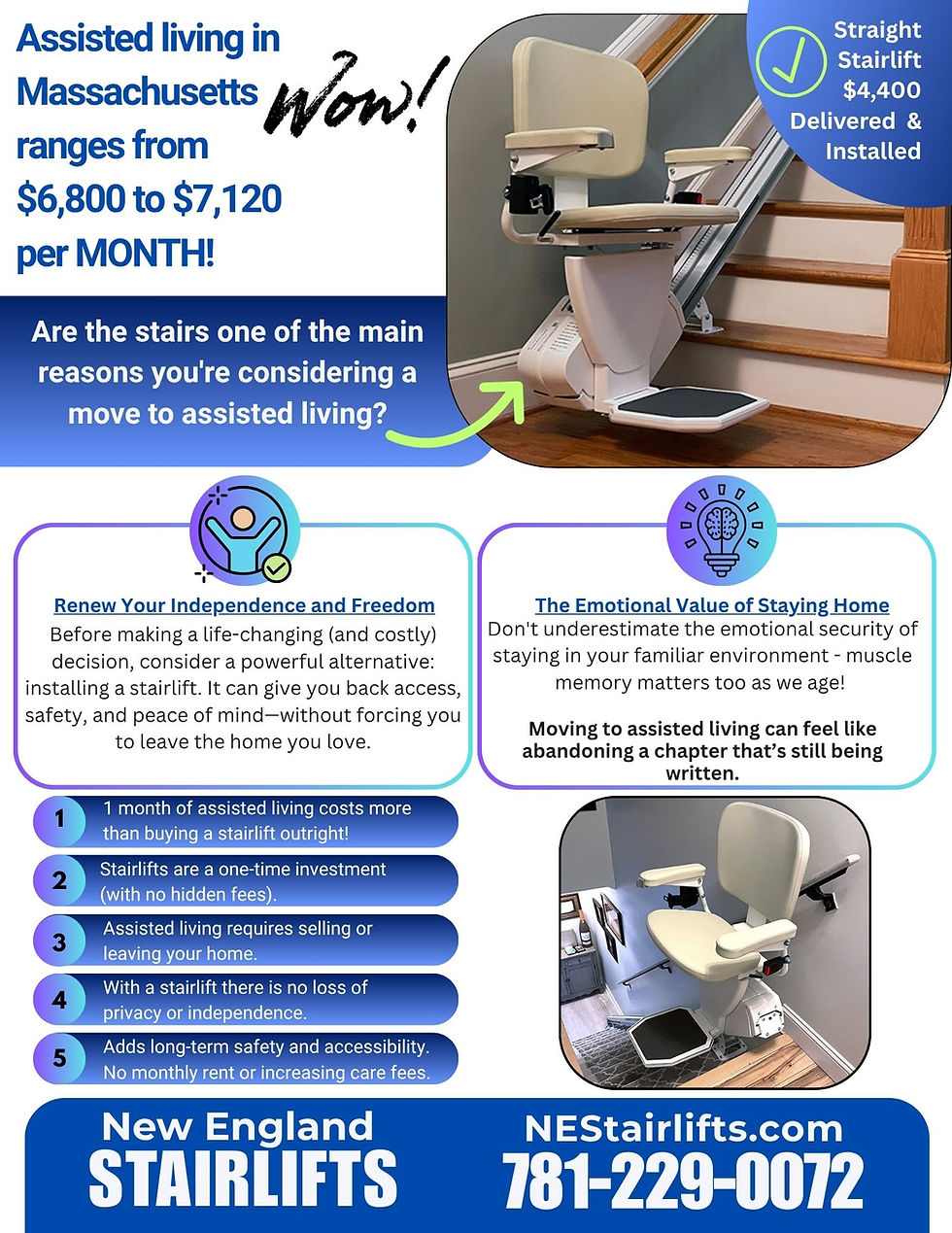Considering buying a new stairlift? Consider the cost of ownership - New Units
- elizabetheagleston

- Aug 7
- 2 min read
⚙️ Drive Systems Matter: Why Atlas 500 Is Built Better
When shopping for a stairlift, most people focus on comfort and safety—but what powers the lift matters just as much. The type of drive system impacts everything from reliability and weight capacity to maintenance needs and long-term costs.
🛠️ Traditional Rack and Pinion Systems (Used by Acorn, Bruno, Handicare, Savaria, Stannah)
Most major stairlift brands rely on rack and pinion drive systems. While widely used, these systems come with several drawbacks:
Requires Annual Lubrication and ServiceOngoing maintenance is a must, and most manufacturers require enrollment in a maintenance plan costing $500–$800/year.
Limited Contact PointsWith only 2–3 points of contact on the rack, this system is more prone to wear, slipping, and breakdowns over time.
Lower Weight CapacityThese systems typically support less weight and may not be ideal for users needing higher support capacity.
Premium Dealer ChargesDue to the complexity and service requirements, most dealers charge a premium for upkeep, knowing that seniors are unlikely to perform maintenance themselves.
🔧 The Atlas 500 Advantage: Worm Gear + Nylon Polymer Rack
The Atlas 500 stairlift uses a more modern and efficient Worm Gear with Nylon Polymer Rack system, which offers superior performance with minimal maintenance:
✅ No Annual Lubrication RequiredThe self-lubricating drive system eliminates the need for costly service contracts.
✅ Stronger Ride with 6 Points of ContactGreater stability and a smoother, quieter experience every time you use it.
✅ Higher Weight CapacityStandard support up to 350 lbs, offering greater confidence and flexibility.
✅ Low-Maintenance OwnershipMaintenance is as simple as a light wipe with a feather duster and battery replacement every 3–5 years, depending on usage.




Comments